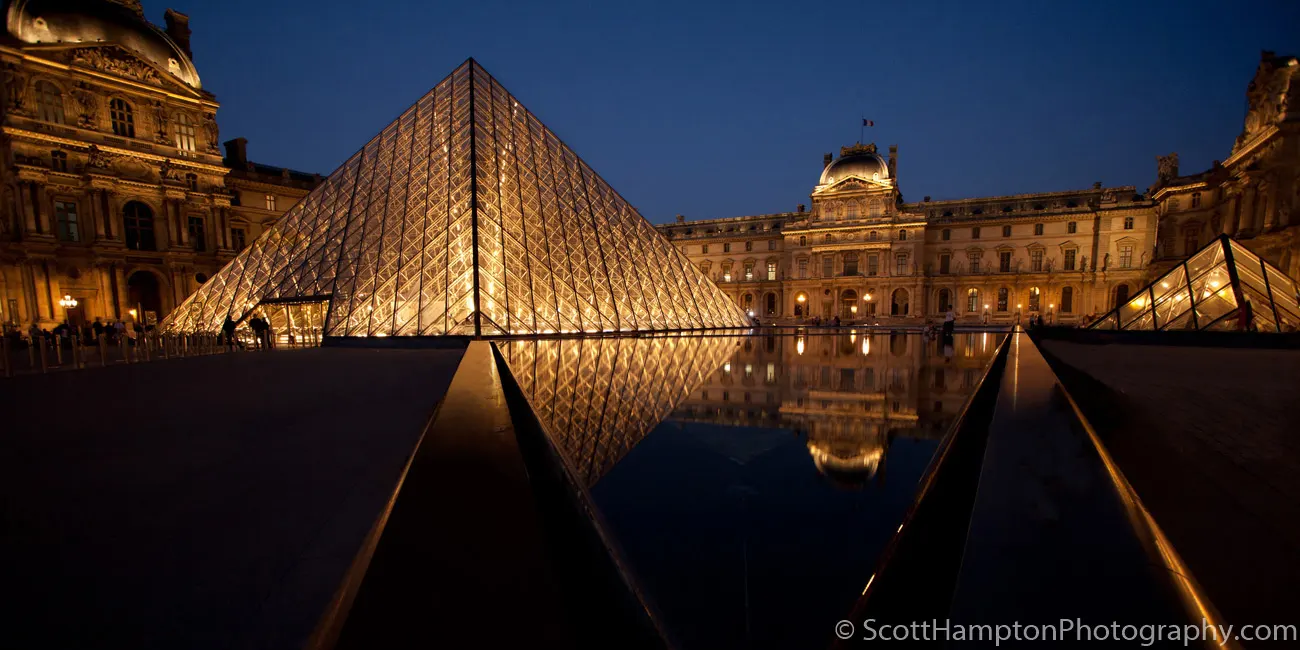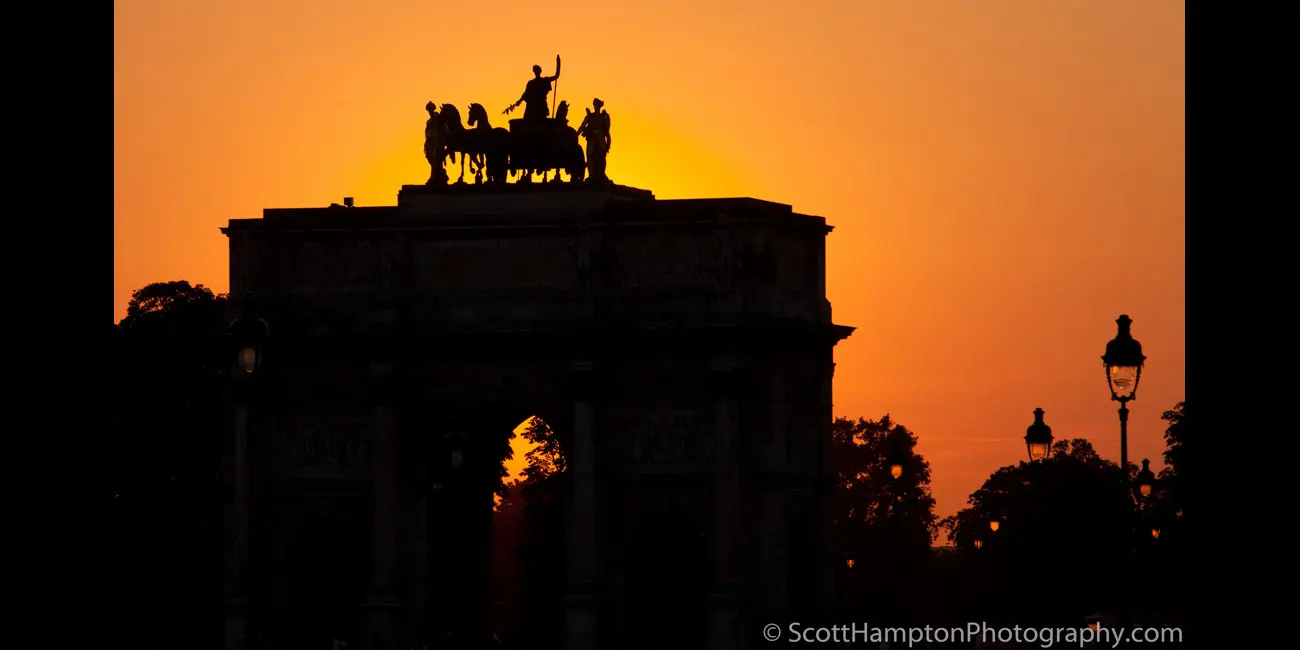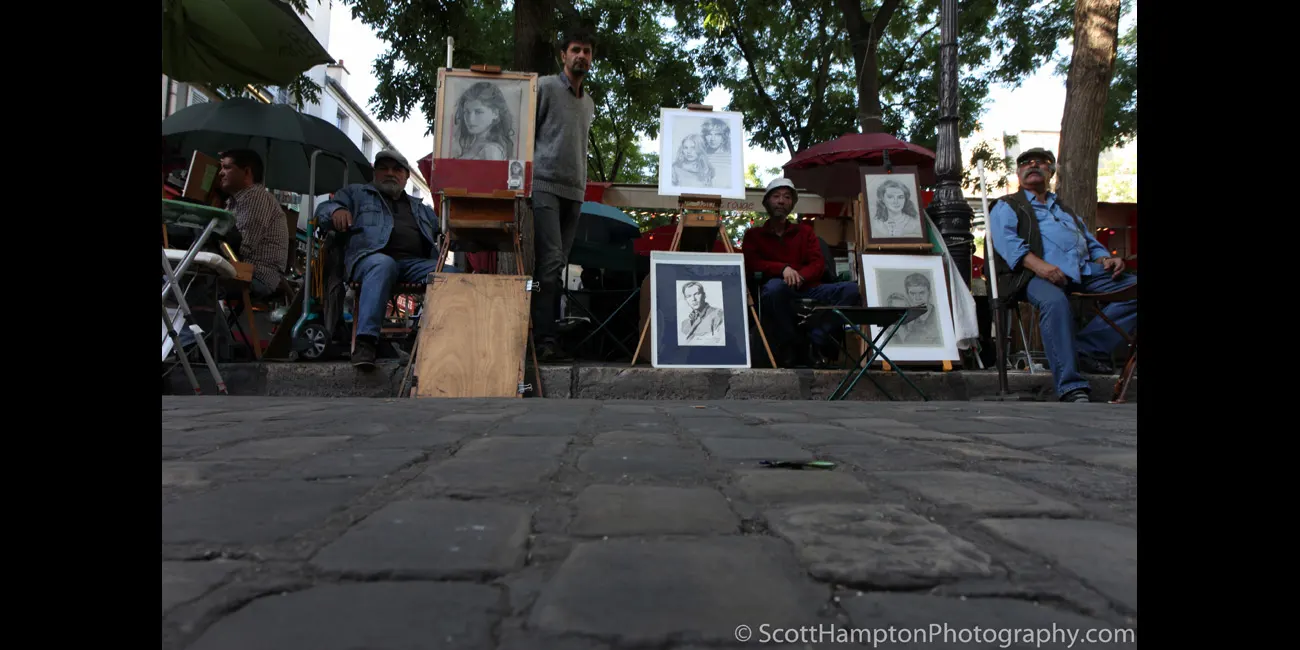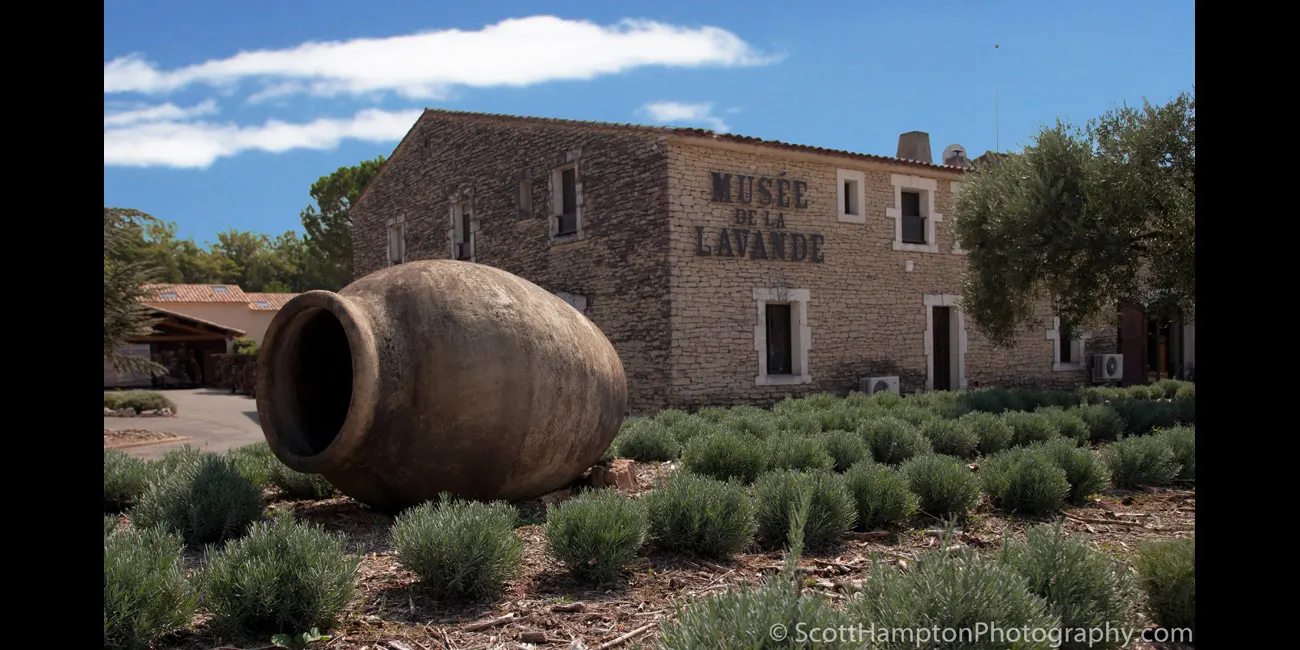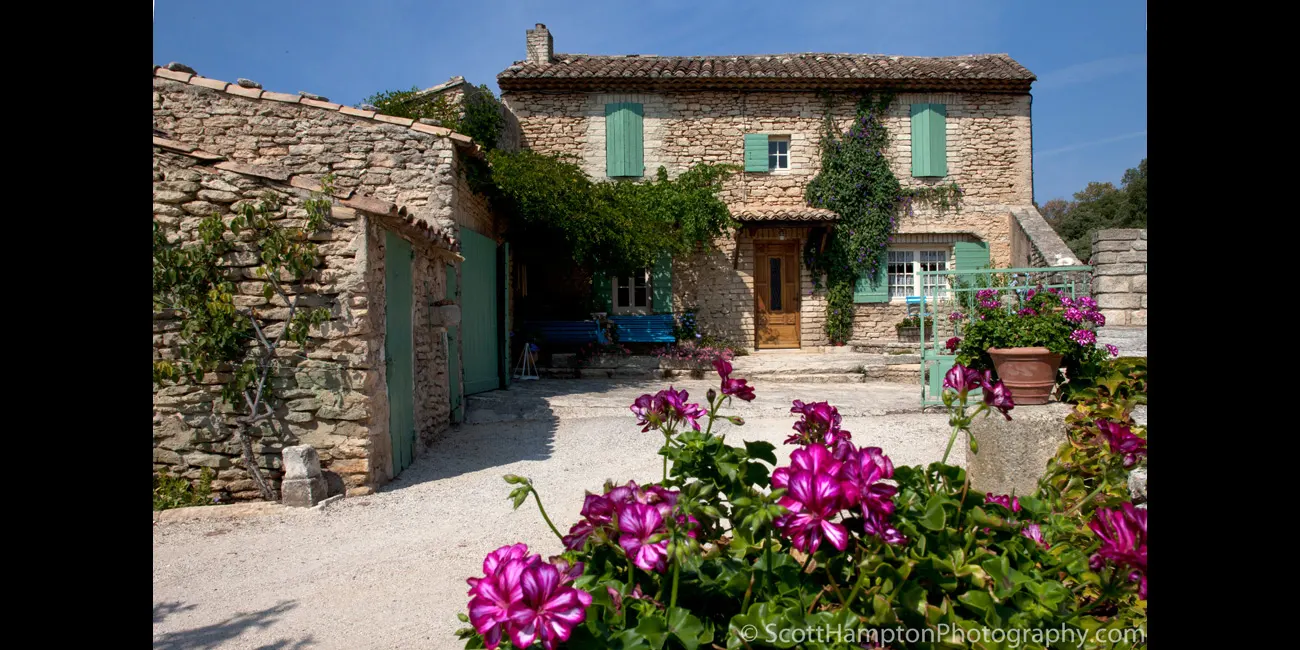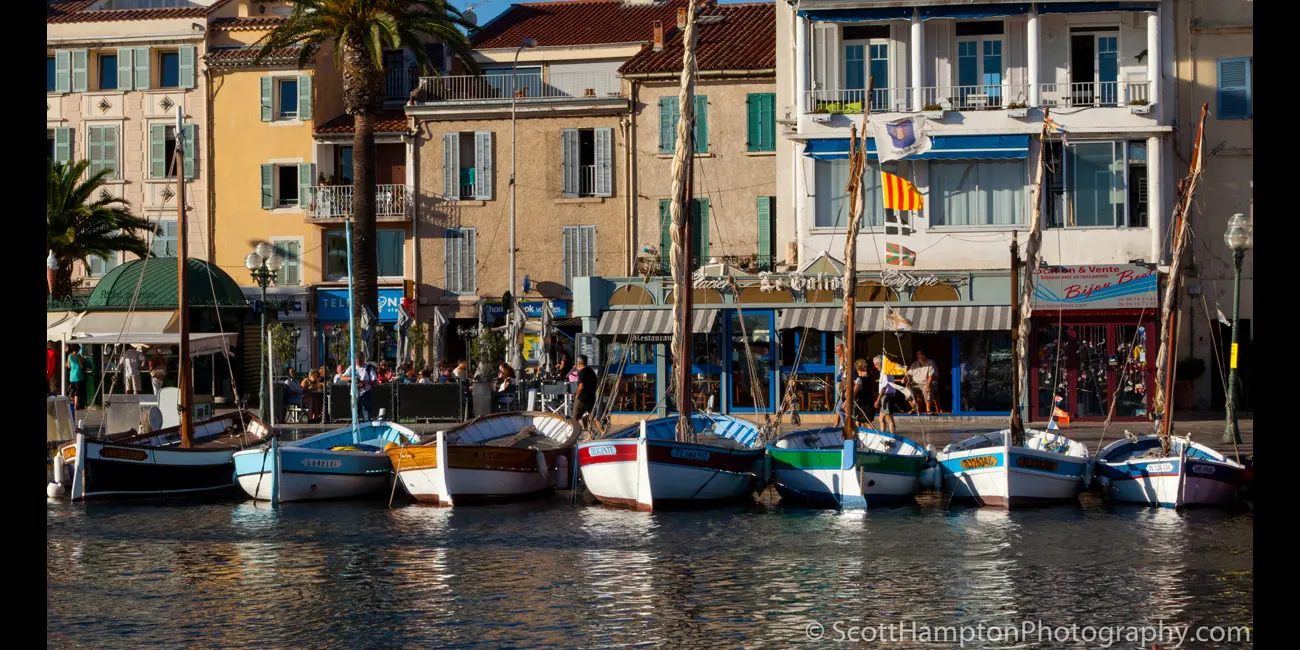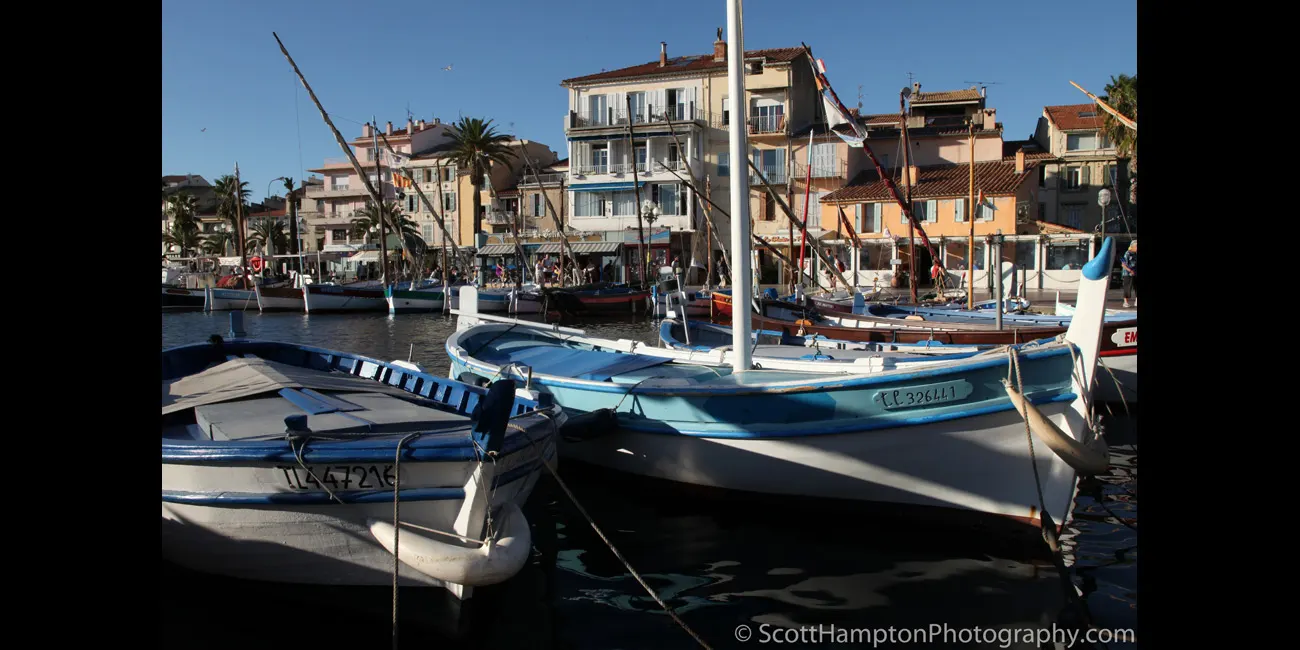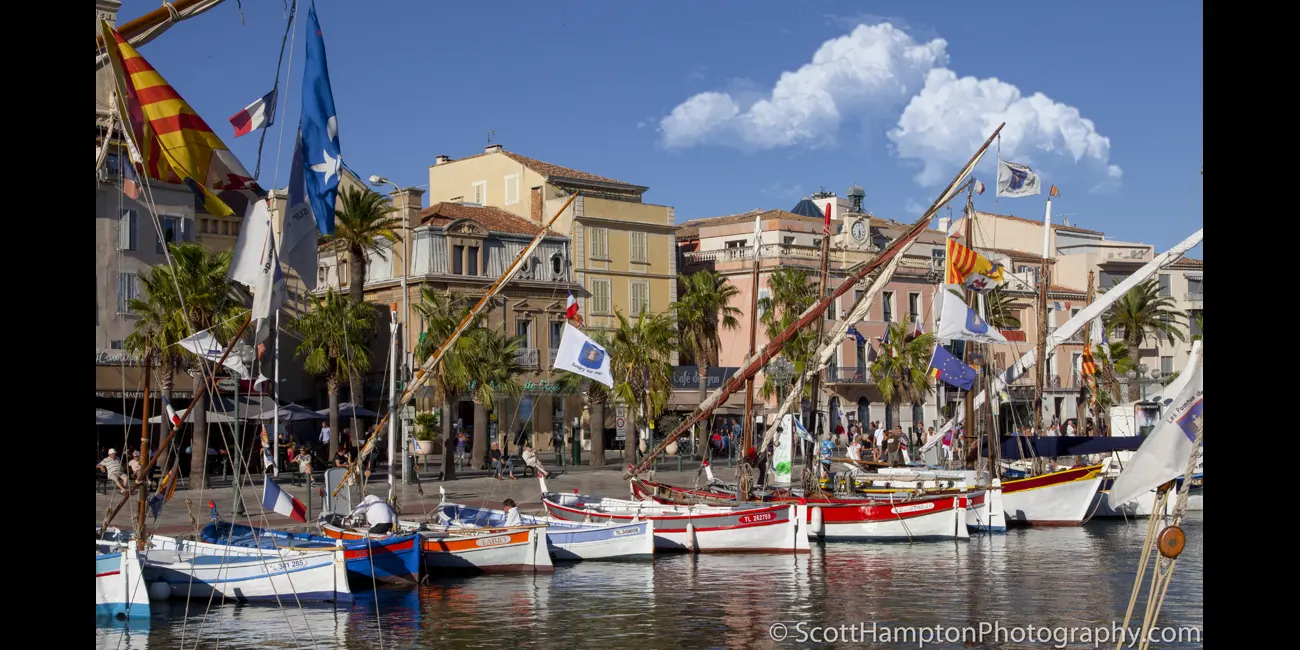Below are some quick tips on how to navigate this website:
Click on Scott Hampton Photography (upper left) to get back to the Home
Page.
While on the Home Page you can cycle throught the thunbnails and select
the collection you want to view. You must then click/tab on the larger image above to
enter that particular collection.
Slideshow automatically rotates image approximately every five seconds. Alternatively, you can swipe, drag (mouse), and even use the arrows on your keyboard to cycle through the photographs and/or thumbnails.
You can click/tap on the photo to get a description.
Index
Une soirée au musée du Louvre
In the foreground is one of the many reflecting pools around the Louvre courtyard. I like the ‘’black mirror’’ look this reflecting pool gives out. I shot this picture soon after sunset so I could get the deep-blue sky.
Carrousel de Paris
A beautiful carousel with the Eiffel Tower as a backdrop, cannot go wrong here.
Toro
I tried to get this as symmetrical as possible so I stuck my tripod out in the water. Didn’t quite get there but this will due well. The soft water and clouds is my incentive for posting this one. The building in the background is the Palais de Chaillot. It is a modern palais built in 1937 replacing the old tenant Palais du Trocadéro.
Prêt à tirer
This is almost the same as my “Feu de suite!” image except this one is in landscape format (wide instead of tall.) The objects in the foreground are 20 water cannons that shoot water over 160 feet. The Fountain of Warsaw is the long reflecting pool beyond the cannons. There are 12 fountains surrounding the pool that shoot water over 35 feet in the air. There are over 30 more fountains that surround the pool. These are the only fountains to survive the 1937 Exposition Internationale des Arts et Techniques dans la Vie Moderne.
Toro Regarder Tour de Eiffel
This capture would have obviously looked much better if the bull was facing the camera but what am I going to about that? Perhaps I can Photoshop it! Just a thought… perhaps next time.
Tour Eiffel avec carrousel
Seeing that I am into long exposure it did not take long to figure out what I was going to do here. It came out alright, but I would have liked to step back a little to make the carrousel smaller relative to the Tour Eiffel. Unfortunately, there was not enough room to step back to make the carrousel smaller, so I had to shoot this with a wide-angle lens (23mm.) The Tour Eiffel “sparkles” on the hour for five minutes, then you get the lighting configuration you are looking at now. This lasts for only about ten seconds and then it goes into the usual “yellow floodlight” format (as if that is not cool enough.) The “sparkle” is electrifying (pun intended) because everyone starts cheering when it goes into sparkle mode. It is hard to capture (it is like a bunch of flashbulbs going off) so I don’t have a good picture of this except for some video.
Tour Eiffel sur la Seine
Looking down the Pont d'Iéna with the Eiffel Tower in the background.
s'élevant au-dessus
It looks like hot and molten steel girders that are about to collapse! But it also looks like some type of four-legged device from Star Wars that is ready to pounce on me. Those things that look like cables dropping from the center are temporary elevator shafts for the workers who are building another lower-level floor. Pretty bold considering the naysayers were predicting the Tour Eiffel was going to collapse under its own weight when being built in 1887.
Notre-Dame sur la rivière
Classic shot with a boat motoring through. Guess I could have waited for a “nicer” looking boat but I didn’t think of it at the time.
Fleurs et Notre-Dame
Five minutes before this I was sleeping on a park bench (beats the cost of a hotel room.) So, I get up and walk down this path along the side of Notre-Dame cathedral. Still trying to pick my head up from my slumber I notice this grove of flowers along the side of the cathedral. I decided to hang my camera low to capture as much of the flowers as I could and that is why you are ‘’looking up’’ to Notre-Dame.
La vente d'art
What really caught my attention is the red and blue artwork. I also like the way the lady is looking through the artwork. These art vendors can be found up and down the Quai de Montebello which is the road just across the Seine River from the Notre-Dame of Paris. This particular vendor has the best view of Notre-Dame in the background. I really liked the way everything kind of ‘’framed’’ the cathedral.
Coucher de soleil au
Carrousel Arc du
Coucher de soleil au Carrousel Arc du, The Arc du Carrousel was commissioned by Emperor Napoleon in 1806 to commemorate his Austrian victories and honor his grand army. The design of the triumphal arch was based on the Arch of Constantine in Rome. On top of the arch were four gilded bronze horses taken by Napoleon from St. Mark's Square in Venice. The statues were returned to Venice after Napoleon's downfall at Waterloo. In 1828 a replica of the horses as well as a chariot were installed as a replacement.
Arc de Triomphe du Carrousel du Louvre
The Arc de Triomphe du Carrousel is a triumphal arch in Paris, located in the Place du Carrousel. It was built between 1806 and 1808 to commemorate Napoleon's military victories of the previous year.
Statue équestre de Louis XIV dans la cour du musée du Louvre
The American architect I.M. Pei, who was in charge of the grand renovation project of the Louvre, persuaded the officials at Versailles to make a copy of this statue which he placed in front of his famous glass pyramid entrance to the Louvre. This copy, cast in lead, is the only sculpture in the courtyard surrounding the glass pyramid
Lumière Eiffel Au cours du Louvre
I was having a little fun with the exposure timing vs. the light beam from the Eiffel Tower. There is a gap in the light because there are two lamps on each side to create the illusion of one continuous beam rotating around the tower like a lighthouse.
Un diamant dans le noir
I remember the first time I visited the Louvre I resisted photographing the glass pyramids that were built in the courtyard of the Musée du Louvre (1984.) It seemed like sacrilege! Here is such a classic design and then they install a modern-looking structure right in the center of the courtyard. I use to think it was completely wrong. Well over the years I have decidedly changed my mind. Without question, this modern-looking glass pyramid enhances the Louvre‘s courtyard, especially in the evening. I also love the way the reflecting pools enhance the entire area. Guess that would be the purpose of a reflecting pool😊
les yeux dans la pyramide
I originally took a much wider angle but I really liked making the diamond shapes of the frame larger, so I cropped about 30% of the original to come up with this. The basic idea here was easy to conceive because of the repetitive nature of the structure and the reflection from the pool.
Louvre
I liked the way the lights created a line on the right. Did not mean to cut it so tight but…
Surfant sur le métro
I call this the Metro but it really isn't I just like saying the word Metro (short for Metropolitan) this is actually the RER which is much nicer than the Metro and mostly above ground.
Conciergerie
The Conciergerie was built as a Royal Family residence and seat of the French Parliament between the tenth and fourteenth century, the building was turned into one of the worst prisons of the period in 1392. Apparently very few prisoners made it out alive.
Moulin Rouge II
Cannot seem to go to Paris without stopping by the Moulin Rouge for a couple of pictures. This is a long exposure; I like the effect it creates on the windmill (moulin.) A few cars passed by, so it erased the light streaks it created. I darkened out a long line people waiting to get into the show because it looked a little ‘’muddy’’ because of cars passing by.
Moulin Rouge
Founded in 1889 the Moulin Rouge is best known as the spiritual birthplace of the modern form of the can-can dance. Originally introduced as a seductive dance by the courtesans who operated from the site, the can-can dance revue evolved into a form of entertainment of its own and led to the introduction of cabarets across Europe. Today, the Moulin Rouge is a tourist attraction, offering musical dance entertainment for visitors from around the world. The club's decor still contains much of the romance of fin de siècle France.
Metro de Moulin Rouge
I saw an opportunity to frame the Moulin Rouge within one of Paris’s is more famous signage.
Sacré-Cœur II, Paris
The Basilica of the Sacred Heart of Paris, commonly known as Sacré-Cœur Basilica and often simply Sacré-Cœur, is a Roman Catholic church and minor basilica in Paris, France, dedicated to the Sacred Heart of Jesus. Sacré-Cœur Basilica is located at the summit of the butte Montmartre, the highest point in the city.
Auberge de la Bonne Franquette
A 16th-century house in the heart of Old Montmartre, La Bonne Franquette keeps alive the Montmartre tradition of cheerfulness and friendliness, welcoming artists and winemakers as well as those who love good wine and food, in keeping with its motto "Love, Eat, Drink and Sing".
Le Poulbot
Le Poulbot offers mouthwatering duck confit, swordfish and French onion soup. Many guests say that waiters offer perfectly cooked crème brûlée, parfait and panna cotta here. Also has a quite photogenic storefront😊
Artiste de Montpelier
Near the end of the 19th century and at the beginning of the twentieth, during the Belle Époque, many artists lived, worked, or had studios in or around Montmartre, including Amedeo Modigliani, Claude Monet, Pierre-Auguste Renoir, Edgar Degas, Henri de Toulouse-Lautrec, Suzanne Valadon, Piet Mondrian, Pablo Picasso, Camille Pissarro, and Vincent van Gogh. I wonder which one of these artists will be our future Van Gogh.
Le Consulat, Cafe à Montpelier
Here I gather with one of my sisters and a friend in a quaint little café located in the Montpelier district of Paris. Montpelier is a bohemian neighborhood which adds to the indescribable charm evident in all the bouquets and cafes that populate this area. And yes, there are many artists that would be more than happy to draw your portrait! At 130 meters high (427ft.), Montpelier is the tallest hill located in Paris and has some of the most wonderful views of the city. This is one of my favorite places in all of Paris!
Sacré-Cœur III, Paris
The Basilica of the Sacred Heart of Paris, commonly known as Sacré-Cœur Basilica and often simply Sacré-Cœur, is a Roman Catholic church and minor basilica in Paris, France, dedicated to the Sacred Heart of Jesus. Sacré-Cœur Basilica is located at the summit of the butte Montmartre, the highest point in the city.
Promenade matinale par la Seine
On the right is the Pont de Bir-Hakeim bridge with the Metro #6 train crossing. The steel bridge was constructed between 1903 and 1905. The railway viaduct is supported by metal colonnades, except where it passes over the île aux Cygnes where it rests on a masonry arch. I like the domes that top the very stylish French Prudential apartments just across the River Seine.
Vélos à louer
I was strolling up Boulevard Saint-Garmain in the Latin Quarter of Paris when I happened across these bicycles. I am a little disappointed that I didn’t get some shots a little further away to create more separation. Unfortunately, I was with some friends who had no time for my nonsense. I know, completely non-photography-friendly people I was with!!
Musée de Cluny
The Musée de Cluny is a museum of the Middle Ages in Paris, France. It is located in the Latin quarter in the 5th arrondissement of Paris at 6 Place Paul-Painlevé, south of the Boulevard Saint-Germain, between the Boulevard Saint-Michel and the Rue Saint-Jacques.
Coucher de soleil sur le Quartier Latin
I was fortunate enough to witness this beautiful sunset on this wonderful evening. To the right stands Notre Dame of Paris ant to the right you can see the Eiffel Tower peaking over the trees.
Notre-Dame de Paris
You can see all the people hanging out on the left bank. This use to be the main ''dock'' for supply ships to Paris. You can still see (not in this photo) the huge iron rings (used for tying-off ships) that come out of the brickwork. Not sure when it was last used as such but I'm guessing it's been over 100 years. I decided to make this a long exposure to help soften the river.
Notre-Dame la Nuit
I would normally like to do a long-exposure for a scene like this to make the river look softer. However, you would not have seen the light beam from the Eiffel Tower if I had done that. The light on the trees is from a river tour boat.
Rails rétroéclairés, Point d'Arcole
The backlit rails and their detail was first thing that attracted me to this spot. To the far left is the Palais de Justice while on the right is the Théâtre de la Ville and the Théâtre du Châtelet.
Musée de la Lavande
Okay, so the Lavender is not present. I really feel sorry for the person who has to lug around that vase.
Since 1991, the Lavender Museum has been welcoming visitors to Coustellet, in the heart of the Luberon Regional Natural Park . This museum is entirely dedicated to fine lavender, its history, its fragrance, its virtues and its culture.
Fleurs à Domicile
This is someone’s private home I noticed on my way to Gordes, France. Gordes is located about 20km east of Avignon in the south of France. I loved the flowers blooming in front of this magnificent home with unbelievable vines, shutters, and brick (rock) work. As I’m photographing this place the owner arrives home. She clearly doesn’t speak English but she did make it clear that I was welcome to enter her yard and take more pictures! Very nice! Of course I did thank her in French😊
Ivy baisse
Gordes is a commune in the Vaucluse département in the Provence-Alpes-Côte d'Azur region in southeastern France. It is located about 30km east of Avignon in the foothills of the Alps in the south of France. Gordes was established in the 8th century by monks of the Abbey of Saint-Chaffre.
Gordes au Coucher du Soleil
As I drove past this spot during the day, I realized this is where I want to be during sunset. So here I am! Gordes is one of the most popular hilltop towns in the Luberon region. It is also one the most beautiful! Looking at this magnificent scenery it is no wonder why many famous celebrities and artist have made their home here.
Dernière Lumière sur Gordes (Last Light on Gordes)
This is a series of six photos stitched together. I used a Lee neutral density graduated filter aligned with the shadows to allow the unlit areas to be more evenly exposed with the lit area. It also has the effect of underexposing the sunlit area and therefore creating more color. This filter is attached to the front of the lens at the time of exposure so it is not ‘‘Photoshopped.’’
Gordes is a commune in the Vaucluse département in the Provence-Alpes-Côte d'Azur region in southeastern France. It is located about 30km east of Avignon in the foothills of the Alps in the south of France. Gordes was established in the 8th century by monks of the Abbey of Saint-Chaffre.
Gordes I
Gordes is a commune in the Vaucluse département in the Provence-Alpes-Côte d'Azur region in southeastern France. The residents are known as Gordiens. It is located about 30km east of Avignon in the foothills of the Alps. Gordes was established in the 8th century by monks of the Abbey of Saint-Chaffre.
Gordes II
Gordes is a commune in the Vaucluse département in the Provence-Alpes-Côte d'Azur region in southeastern France. The residents are known as Gordiens. It is located about 30km east of Avignon in the foothills of the Alps. Gordes was established in the 8th century by monks of the Abbey of Saint-Chaffre.
Pont d'Avignon
Originally built between 1171 and 1185, the Pont Saint Bénezet initially spanned the Rhône River between Avignon and Villeneuve-lès-Avignon with an original length of some 900m, but suffered numerous collapses during floods. It was reconstructed several times before being damaged beyond repair in 1668. Since then, its surviving arches have collapsed or been destroyed, and only four of the original 22 arches remain and it therefore now ends abruptly in the middle of the Rhone.
Aqueduct Galas
Built between 1854 to 1857 the Aqueduct Galas is a historical monument of Vaucluse, located in the town of Fontaine-de-Vaucluse. It allows the Canal de Carpentras to cross the Sorgue. The Sorgue River (below) was used as a trade route by the Phoenicians of Massalia in the 6th and 7th century. Being from the mid 19 century this aqueduct is certainty the most exciting aqueduct around (both photographically and historically.)
Belle maison à Fontaine-de-Vaucluse
This appears to be someone’s private home in the village of Fontaine-de-Vaucluse. The masonry work and all its detail are amazing! The smorgasbord of colors combined with the light dancing on the wall provides a feast for the eyes. The dilapidated door along with some of the missing masonry artwork only adds to the charm.
Fontaine-de-Vaucluse (''Spring of Vaucluse'') is built around a spring in a valley at the foot of the Vaucluse Mountains, between Saumane and Lagnes, not far from L'Isle-sur-la-Sorgue. It is named after the spring which is the source of the River Sorgue. As a result of the plentiful water the local inhabitants decided to create several mills to run textile factories. This capture includes one of their historical water wheels along with a small part of the town along the waterfront. The River Sougue was also used as a trade route by the Phoenicians of Massalia in the 6th and 7th century.
Due to the ''mysterious'' nature of the spring, it became the object of major cult groups since Antiquity. More than 1,600 antique coins dating as far back as the first century BC have been recovered from the bottom of the spring.
Jacques Cousteau and another diver were almost killed while searching for the bottom of the spring. An air compressor used to fill their tanks had taken in its own exhaust fumes and produced carbon monoxide - nearly killing them before they could return to the surface from a depth of approximately 100 meters.
Moulin à eau de Fontaine-de-Vaucluse
This is a typical water wheel (Moulin) used to power the textile and paper mills in the village of Fontaine-de-Vaucluse.
Fontaine-de-Vaucluse (''Spring of Vaucluse'') is built around a spring in a valley at the foot of the Vaucluse Mountains, between Saumane and Lagnes, not far from L'Isle-sur-la-Sorgue. It is named after the spring which is the source of the River Sorgue. As a result of the plentiful water the local inhabitants decided to create several mills to run textile factories. This capture includes one of their historical water wheels along with a small part of the town along the waterfront. The River Sougue was also used as a trade route by the Phoenicians of Massalia in the 6th and 7th century.
Due to the ''mysterious'' nature of the spring, it became the object of major cult groups since Antiquity. More than 1,600 antique coins dating as far back as the first century BC have been recovered from the bottom of the spring.
Le musée Pétrarque, le coeur un organe sensible
This is the entrance to a small museum in Fontaine-de-Vaucluse. Currently there is an exhibit about the heart.
Fontaine-de-Vaucluse (''Spring of Vaucluse'') is built around a spring in a valley at the foot of the Vaucluse Mountains, between Saumane and Lagnes, not far from L'Isle-sur-la-Sorgue. It is named after the spring which is the source of the River Sorgue. As a result of the plentiful water the local inhabitants decided to create several mills to run textile factories. This capture includes one of their historical water wheels along with a small part of the town along the waterfront. The River Sougue was also used as a trade route by the Phoenicians of Massalia in the 6th and 7th century.
Due to the ''mysterious'' nature of the spring, it became the object of major cult groups since Antiquity. More than 1,600 antique coins dating as far back as the first century BC have been recovered from the bottom of the spring.
Jacques Cousteau and another diver were almost killed while searching for the bottom of the spring. An air compressor used to fill their tanks had taken in its own exhaust fumes and produced carbon monoxide - nearly killing them before they could return to the surface from a depth of approximately 100 meters.
La Boutique en Les Baux
Just one of many quaint little shops in Les Baux. This one seems to operate out of a door.
Les Baux :
Traces of habitation have been found dating back as far as 6000 BC, and the site was used by the Celts as a hill fort around the 2nd century BC. During the Middle Ages it became the seat of a powerful feudal lordship that controlled 79 towns and villages in the vicinity. The town was granted in 1642 to the Grimaldi family, rulers of Monaco, as a French marquisiate. Les Baux is now given over entirely to the tourist trade, relying on a reputation as one of the most picturesque villages in France.
Domicile dans le Vaucluse, France
A nice entrance to a home on a street named Chemin des Soleillants in a town called Fontaine-de-Vaucluse, France. A lot of water flows through this town that ran textile mills back in the middle ages.
The Arles Amphitheatre
The Arles Amphitheatre (French: Arènes d'Arles) is a Roman amphitheatre in the southern French town of Arles. This two-tiered Roman amphitheatre is probably the most prominent tourist attraction in the city of Arles, which thrived in Roman times. Arles Amphitheatre dates from 90 AD. The amphitheatre was capable of seating over 20,000 spectators, and was built to provide entertainment in the form of chariot races and bloody hand-to-hand battles. Today, it draws large crowds for bullfighting during the Feria d'Arles as well as plays and concerts in summer.
Le Matador d'Arles
The Arles Amphitheatre (French: Arènes d'Arles) is a Roman amphitheatre in the southern French town of Arles. This two-tiered Roman amphitheatre is probably the most prominent tourist attraction in the city of Arles, which thrived in Roman times. Arles Amphitheatre dates from 90 AD. The amphitheatre was capable of seating over 20,000 spectators, and was built to provide entertainment in the form of chariot races and bloody hand-to-hand battles. Today, it draws large crowds for bullfighting during the Feria d'Arles as well as plays and concerts in summer.
Pont du Gard
Pont du Gard is an ancient Roman aqueduct bridge that crosses the Gardon River in Vers-Pont-du-Gard near Remoulins, in the Gard département of southern France. It is part of the Nîmes aqueduct, a 50 km-long (31 mi) structure built by the Romans to carry water from a spring at Uzès to the Roman colony of Nemausus (Nîmes). Because the terrain between the two points is hilly, the aqueduct – built mostly underground – took a long, winding route that crossed the gorge of the Gardon, requiring the construction of an aqueduct bridge. Built in the 1st century AD, the Pont du Gard is the highest of all Roman aqueduct bridges and is the best preserved after the Aqueduct of Segovia. It was added to UNESCO's list of World Heritage Sites in 1985 because of its historical importance.
Parasol rouge à la Brasserie
Wandering around Saint- Rémy -de-Provence I happened upon this brasserie (brewery/bar) called L'Industrie. Nothing very special about L'Industrie, it’s probably like a majority of all the brasseries in the South of France. However, this brasserie happens to have several red parasols in the front of their establishment. The placement and color of these parasols combined with the nice background led to my fascination and this capture.
Buste de Nostradamus à Saint-Rémy-de-Provence
This is a bust of Nostradamus erected in 1859. Obviously, my picture did not focus on the bust but all the French beauty surrounding it. The bust was created by Ambroise Pascal Liotard. He exhibited busts at the Paris Salon in the 1830s. He participated in the Marseille exhibitions of 1859 and 1860 where he presented busts and a statue representing Le Chanoine de Molières which is currently in the garden of the Saint-Nicolas de Tarascon hospital.
Allié à Saint-Rémy-de-Provence
Actually is just a little street typical of medieval France. The name of this street is rue Nostradamus.
Photo de groupe de notre excursion français
Photo de groupe de notre excursion français, From left to right, front to back. Karen (Los Angles, CA), Gabriella (Barcelona, Spain), Carol (Venice, CA), Gail (Baton Rouge, LA), Brian (Venice, CA), Tracy (Santa Monica, CA), Judy (Marina del Rey, CA), Scott (Belmont, CA)
Sur le bord de l'eau
This is the waterfront of a fishing village called Cassis. It is located on the Mediterranean coast about 90 miles east of Monte Carlo. Clearly the boats along the harbor here are very well maintained. I’m thankful to the tour boat captain who allowed me on to his boat so I could get a much better angle than if I were on the dock.
Cassis is a popular tourist destination, famous for its cliffs and the sheltered inlets called calanques.
The site where Cassis now sits was first occupied between 500 and 600 BC. These people lived by fishing, hunting, and by farming. During the Roman times, Cassis was part of the maritime route. At this time it was a small village established mainly around the beaches. The principal livelihood was fishing and maritime trade with North Africa and the Middle East. By the fifteenth century, Cassis was ceded to the Counts of Provence, then René of Anjou gave the town to the Bishops of Marseille, who ruled the town until the Revolution of 1789.
By the eighteenth century new industries were developed, including the drying of cod, the manufacture of olive oil, clothing, coral work, wine, and the excavation of local stone which made Cassis famous since antiquity.
Vantardise de Sanary-sur-Mer
Some colorfully painted fishing boats. You could find all these cute little fishing villages up and down the French Riviera. This village is called Sanary-sur-Mer and is less than 100 miles West of Monaco, France.
Bourjojo
Name this one after this person's boat. I was able to gather a little information about this vessel. It was built in 1955 in Toulon, France. It began life as a fishing boat but now is used for purely recreational purposes.
Soirée bord de l'eau
These boats are in the port of Sanary-sur-Mer. Sanary-sur-Mer is located along the French Riviera just under 100 miles west of Monaco. There are several names for these boats as they are used widely along the Mediterranean shore throughout several different regions. On the coast of Provence, the term refers to a small Rafiau rowboat, sometimes with a Latin rigging (NOTE: could be some translation issues here.)
Bateaux de pêche de Sanary-sur-Mer II
Pointus meaning pointed, is the name for this type of boat as named in this region. This is one of my favorite captures of this region. This photo was taken in the harbor of a village called Sanary-sur-Mer.
Sanary's coastline has a number of small beaches and, unlike most small towns on the Mediterranean coast, it is an active village all year round. Sanary-sur-Mer is one of the sunniest places in France, with an average of only 61 days of rain, mostly in winter. Sanary is regularly swept by the Mistral, a strong wind coming from the Rhone Valley, which brings low humidity around 20%, gusts up to 130 km/h (81 mph), cool temperatures, sun and deep blue skies. Wind is near gale force or higher on average 115 days per year, and storm force eight days per year, making Sanary a favorite destination for windsurfers.
Bateaux de pêche de Sanary-sur-Mer
Another close-up of these wonderfully maintained boats.
Appartements le long du quai d'Orléans
This photo was captured from the Pont de la Tournelle bridge looking across the Seine River. The buildings across the river are apartments along the quai d'Orléans. The quai d'Orléans (the road) was constructed between 1614 and 1646. I was in this area waiting for the sun to set on the Notre-Dame de Paris when I noticed how nice the late sunlight looked as it bathed the apartments across the Seine River.
Gordes III
This is one of the most famous hilltop towns in the Luberon region. Gordes is located about 30km east of Avignon, France.
Gordes IV
This village can boast about being amongst one of the most beautiful villages in France. It has narrow cobbled streets which thread their way through tall houses; built against the rock, clinging onto its flanks and whispering the tales of a thousand legends.
Cassis I
Cassis is a popular tourist destination, famous for its cliffs and the sheltered inlets called calanques.
Cassis II
Cassie is a beautiful fishing village located on the French Riviera about 150 miles east of Monte Carlo.
Sanary-sur-Mer sur la Côte d'Azur
In the 16th century the seigneur established a fishing village here, clustered around the medieval watchtower, under the protection of "Sanct Nazari" of Lérins Abbey. Sanary-sur-Mer is located on the French Rivera about 90 miles west of Monaco.
La baie de Sanary-sur-Mer
This is what I am calling the bay around Sanary-sur-Mer, I do not know the real name. There is nothing very exceptional about this photograph except is the last of my France series. I guess I am a little sentimental in saying goodbye to France for now.
Fruit de Provence
Just traveling by a produce stand and saw this. This is not real fruit just an attraction.
fleurs rouges à la Tour Eiffel
Being late in the season I was happy to find this patch of flowers near the Tour Eiffel. I felt I got lucky because I could “squeeze” the tower in between the trees and still see the flowers.
Feu de suite!
I kind of “screwed up” and shot this with a long exposure (12 seconds.) I was too caught up taking long exposure around the water and did not think to speed up the shot here. As a result, the clouds look a little “wispy” but I still like the composition.
The structure in the foreground is what I call water cannons. First of all, they look like cannons, they shoot out a lot of water, and they are very loud! Some of the cannons started up while I was capturing these images. Fortunately, I could hear air rushing out them as they started up but it still made me jump when the water hit the spout. Anyways the fountain was blocking the bottom half of the tower, so I backed off about 50 feet. Meanwhile another young couple decided to visit the spot I was just at. I could almost see this coming and I am kicking myself for not getting ready for this one because I knew the second set of cannons would start up soon (been watching for some time.) Anyways the poor girl went airborne when that second set of cannons went off. They did not have the benefit of knowing something was about to happen since the first set was making too much noise to hear the second set starting up. It was hilarious, and of course the guy was all too ready to take her in his arms to comfort her. How romantic!
Tour Eiffel en noir et blanc
Cannot shoot the Eiffel Tower without doing some in black and white.
Tour Eiffel sur la Seine II
Cannot shoot the Eiffel Tower without doing some in black and white. Got a little extra water in this one.
Tour Eiffel sur la Seine III
Looking at the Eiffel Tower along the Pont d'Iéna bridge.
Toupie
Might not be the most picturesque photo in the world, but I thought it was a “fun shot!” This carrousel is located right under the Tour Eiffel, so I decided to line-up the tower over the center of the carrousel. This is a “long exposure” which records the carrousel lights spinning for around 8 seconds which in turn creates the “round neon-light look.” I would have loved to show more of Tour Eiffel over the carrousel but like my “Tour Eiffel avec carrousel” photo I did not have much room to walk back. This time the obstacle was the Seine River. Toupie, meaning a “spinning top” would have been more appropriate if I flipped the photo upside-down but I could not do that with the Eiffel Tower. It seemed like sacrilege.
Fleurs et Notre-Dame de Paris
This is the south view of the front entrance for the Cathedral of Notre Dame in Paris. This is not the most photographed side of the cathedral, but the flowers (fleurs) attracted me to this capture.
Bougies à la cathédrale Notre Dame
Candles lit in prayer at the Notre Dame Cathedral in Paris, France. Here is a “terrace” of prayer candles with one of many magnificent windows in the background.
Bougies de prière à l'intérieur de la Cathédrale Notre Dame
Just happened to catch this interesting looking gentleman lighting a prayer candle inside the Notre-Dame Cathedral. I was surprised to learn that they do allow photography (no flash) inside the cathedral! This photo is a composite of two photos. The first shot was exposed for the dark interior (the subject) but the stained-glass window was blown out (looked like a clear glass window.) I then combined that shot with another shot that I exposed for the window to capture the beautiful detail within the glass. It has only been about three years since I put down my film camera so I still kind of think of this as cheating.
Dans les Dernières Années
This is a banner hanging on the “outside” of the Louvre museum along the Rue de Rivoli. This is the entrance for the section that houses the temporary installations. Currently they are exhibiting the paintings and drawings of Raphael.
Raphael (1483 – 1520) is credited with classicizing formulas which permanently establish his fame and the ideal of “harmony of the classical Renaissance.”
Auberge de la Bonne Franquette
Le Poulbot offers mouthwatering duck confit, swordfish, and French onion soup. Many guests say that waiters offer perfectly cooked crème brûlée, parfait and panna cotta here. Also has a quite photogenic storefront😊
L’artiste Caricatural de Montpelier
The Caricature Artist of Montpelier
Dernière lumière au Sacro Cuore dans Portrait
Last light at the Sacré-Coeur in Paris.
Sacré-Cœur is built of travertine stone quarried in Château-Landon, France. Construction began in June of 1875 and was completed in 1914. The basilica complex includes a garden for meditation, with a fountain. The top of the dome is open to tourists and affords a spectacular panoramic view of the city of Paris, which is mostly to the south.
Tour Eiffel II
Looks like three giant cables dropping down through the arch. Two of those are elevator shafts for the construction workers because they are building a new floor on the first level. Funny, when they first built the Eiffel Tower people said it was going to crush under its own weight. Here they are adding another deck.
Musée de Cluny II
An interesting looking door I found at the Cluny Museum in Paris.
Les portes de Gordes
Just a beautiful looking dilapidated wall and door. Besides taking pictures of French doors in France I also love taking pictures of French doors in New Orleans, USA.
Automne Chutes (Autumn Falls)
Hopefully I don’t have to explain why I like this window.
Gordes is a commune in the Vaucluse département in the Provence-Alpes-Côte d'Azur region in southeastern France. It is located about 30km east of Avignon in the foothills of the Alps in the south of France. Gordes was established in the 8th century by monks of the Abbey of Saint-Chaffre.
Café de Gordes
This is probably my favorite ‘’door/window captures.’’ Beautiful flowers on the sidewalk and an amazing Coca-Cola sign above.
Gordes is a commune in the Vaucluse département in the Provence-Alpes-Côte d'Azur region in southeastern France. It is located about 30km east of Avignon in the foothills of the Alps in the south of France. Gordes was established in the 8th century by monks of the Abbey of Saint-Chaffre.
Volets de Fontaine-de-Vaucluse
XXXXXXXXXXXX
Fleurs violettes
This is my artistic’’ shot for the day. I didn’t really expect too much form it but it turned out okay. I would had rather gotten everything in focus but I was too close to the flower.
Fontaine-de-Vaucluse (''Spring of Vaucluse'') is built around a spring in a valley at the foot of the Vaucluse Mountains, between Saumane and Lagnes, not far from L'Isle-sur-la-Sorgue. It is named after the spring which is the source of the River Sorgue. As a result of the plentiful water the local inhabitants decided to create several mills to run textile factories. This capture includes one of their historical water wheels along with a small part of the town along the waterfront. The River Sougue was also used as a trade route by the Phoenicians of Massalia in the 6th and 7th century.
Due to the ''mysterious'' nature of the spring, it became the object of major cult groups since Antiquity. More than 1,600 antique coins dating as far back as the first century BC have been recovered from the bottom of the spring.
Jacques Cousteau and another diver were almost killed while searching for the bottom of the spring. An air compressor used to fill their tanks had taken in its own exhaust fumes and produced carbon monoxide - nearly killing them before they could return to the surface from a depth of approximately 100 meters.
Cathédrale de Cavaillon
Cavaillon Cathedral is a former Roman Catholic church located in the town of Cavaillon, Vaucluse, France. It is in the Romanesque architectural style, built in the 11th-13th century. The cathedral is a national monument. Until the French Revolution, it was the seat of the Bishop of Cavaillon.
La Treille
Nicely decorated window at a store called La Treille which is named after a district outside of Marseilles.
Bois de Chauffage
Looks like this person has an easy way to get firewood into their home. I hesitate to show this one because the doorway and steps has been ‘’modernized’’ with concrete instead of stones. Judging from the colors it does look like they created the concrete using the same aggregate as the stones.
XXXXXXXXXXXXXXXX
XXXXXXXXXXXX
My name is Scott and this is my second major website revision for ScottHamptonPhotography.com. I am an IT pro but not a website designer. My old photography website was very ‘’static’’ looking and needed to be moved into the modern world. Luckily I was able to find an app that helped me move my website into the modern age! As a result, this site is currently in development and has minimal navigational (or any other) features at this time(November 2015.)
